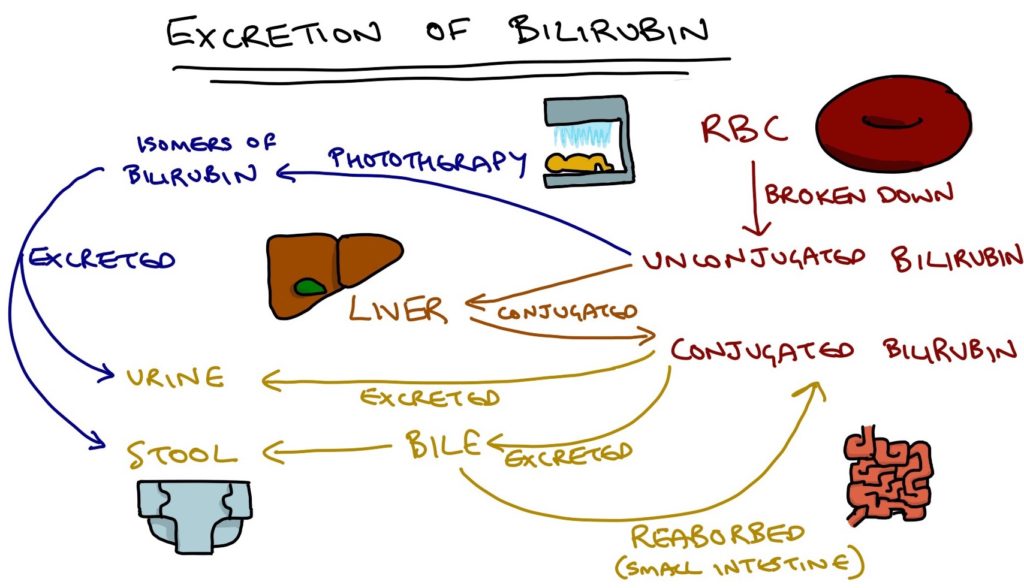Biliary atresia is a congenital condition where a section of the bile duct is either narrowed or absent. This results in cholestasis, where the bile cannot be transported from the liver to the bowel. Conjugated bilirubin is excreted in the bile, therefore biliary atresia prevents the excretion of conjugated bilirubin.
Biliary atresia presents shortly after birth with significant jaundice due to high conjugated bilirubin levels. Suspect biliary atresia in babies with a persistent jaundice, lasting more than 14 days in term babies and 21 days in premature babies. The initial investigation for possible biliary atresia is conjugated and unconjugated bilirubin. A high proportion of conjugated bilirubin suggests the liver is processing the bilirubin for excretion (by conjugating it), but it is not able to excrete the conjugated bilirubin because it cannot flow through the biliary duct into the bowel.
There are many causes of jaundice in the neonate. The majority of cases are benign (e.g. breast milk jaundice), however more serious causes such as biliary atresia need to be excluded by measuring the conjugated bilirubin level.

Management
Management of biliary atresia is with surgery. The “Kasai portoenterostomy” involves attaching a section of the small intestine to the opening of the liver, where the bile duct normally attaches. This is somewhat successful and can clear the jaundice and prolong survival. Often patients require a full liver transplant to resolve the condition.
Last updated August 2019
